Feldpost is the German military mail service. Its history dates back to the 18th century in the Kingdom of Prussia during the Seven Years' War and War of the Bavarian Succession and has existed ever since in different forms and shapes.
Contents

Feldpost is the German military mail service. Its history dates back to the 18th century in the Kingdom of Prussia during the Seven Years' War and War of the Bavarian Succession and has existed ever since in different forms and shapes.

During 1937-39, the German Wehrmacht had a military mailing service that provided free postal services within Germany. On September 3, 1939, the first changes to the service occurred. Postcards and letters up to 250 g including newspapers could be mailed free of charge by the German para-military and military organizations. Later in 1939, packages weighing up to 1000 g were included at the nominal rate of 20 Reichspfennig fee. All German military branches had its own organic postal administration in charge of receiving and delivering mail. For Feldpost offices closest to the combat zone a mobile facility usually processed mail for all military branches.
In 1940 further changes were introduced followed through the rapid conquest of Europe. Eventually a series of postal agreements were set up between Germany and the occupied countries providing an extended usage of Feldpost service. Countries such as the Netherlands had close to 50,000 pro-Nazi volunteers that during the course of the war used the Feldpost service. Eventually these postal agreements were settled between Germany and other countries, including neutral countries such as Portugal, Spain, Switzerland, Sweden and Turkey, which had volunteers within the German forces.

To preserve the secrecy of troop movements, each battalion was assigned a five digit code number called Feldpost number (FPN). By the end of 1939, letter prefixes "L" and "M" were attached in front of each FPN to units belonging to the Luftwaffe and Kriegsmarine. A breakdown by military units was added by attaching letter prefixes "A" through "E" at the end of each FPN. The letter A generally signified headquarters company, the others stood for line companies.
The sequence of an FPN does not necessarily mean that the location of the units were at the same area. The postal cover/postcard itself was usually stamped with a military Feldpost Cancellation and Official Military Unit Seal. Feldpost numbers were sometimes reassigned to other units, particularly when a unit ceased to exist. Normally Feldpost mail could not be dispatched nor received by civil post offices. If a soldier wanted to send mail through a civil post office, full postage was collected.

A post office is a public facility and a retailer that provides mail services, such as accepting letters and parcels, providing post office boxes, and selling postage stamps, packaging, and stationery. Post offices may offer additional services, which vary by country. These include providing and accepting government forms, and processing government services and fees. The chief administrator of a post office is called a postmaster.
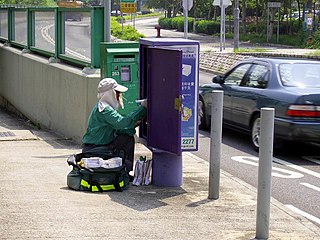
The mail or post is a system for physically transporting postcards, letters, and parcels. A postal service can be private or public, though many governments place restrictions on private systems. Since the mid-19th century, national postal systems have generally been established as a government monopoly, with a fee on the article prepaid. Proof of payment is usually in the form of an adhesive postage stamp, but a postage meter is also used for bulk mailing.

A postal code is a series of letters or digits or both, sometimes including spaces or punctuation, included in a postal address for the purpose of sorting mail.

A postcard or post card is a piece of thick paper or thin cardboard, typically rectangular, intended for writing and mailing without an envelope. Non-rectangular shapes may also be used but are rare.

Postal codes used in the United Kingdom, British Overseas Territories and Crown dependencies are known as postcodes. They are alphanumeric and were adopted nationally between 11 October 1959 and 1974, having been devised by the General Post Office. A full postcode is known as a "postcode unit" and designates an area with several addresses or a single major delivery point.

Postal history is the study of postal systems and how they operate and, or, the study of the use of postage stamps and covers and associated postal artifacts illustrating historical episodes in the development of postal systems. The term is attributed to Robson Lowe, a professional philatelist, stamp dealer and stamp auctioneer, who made the first organised study of the subject in the 1930s and described philatelists as "students of science", but postal historians as "students of humanity". More precisely, philatelists describe postal history as the study of rates, routes, markings, and means.

A Canadian postal code is a six-character string that forms part of a postal address in Canada. Like British, Irish and Dutch postcodes, Canada's postal codes are alphanumeric. They are in the format A1A 1A1, where A is a letter and 1 is a digit, with a space separating the third and fourth characters. As of October 2019, there were 876,445 postal codes using Forward Sortation Areas from A0A in Newfoundland to Y1A in Yukon.
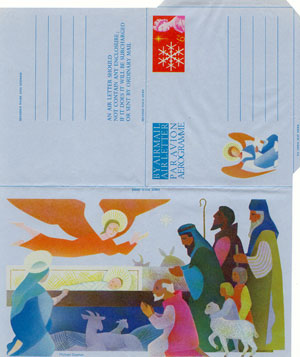
An aerogram, aerogramme, aérogramme, air letter or airletter is a thin lightweight piece of foldable and gummed paper for writing a letter for transit via airmail, in which the letter and envelope are one and the same. Most postal administrations forbid enclosures in these light letters, which are usually sent abroad at a preferential rate. Printed warnings existed to say that an enclosure would cause the mail to go at the higher letter rate.
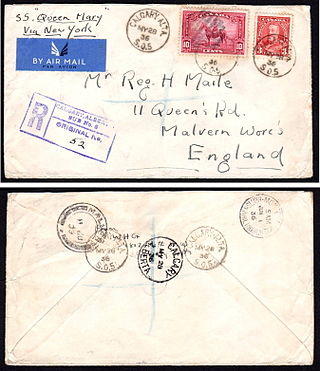
Registered mail is a mail service offered by postal services in many countries which allows the sender proof of mailing via a mailing receipt and, upon request, electronic verification that an article was delivered or that a delivery attempt was made. Depending on the country, additional services may also be available, such as:

Military mail, as opposed to civilian mail, refers to the postal services provided by armed forces that allow serving members to send and receive mail. Military mail systems are often subsidized to ensure that military mail does not cost the sender any more than normal domestic mail. In some cases, military personnel in a combat zone may post letters and packages to their home country free of charge. Modern military mail services are provided by most armed forces around the world. In some nations, individual service branches may run their own military mail program.

Postal censorship is the inspection or examination of mail, most often by governments. It can include opening, reading and total or selective obliteration of letters and their contents, as well as covers, postcards, parcels and other postal packets. Postal censorship takes place primarily but not exclusively during wartime and periods of unrest, and occasionally at other times, such as periods of civil disorder or of a state of emergency. Both covert and overt postal censorship have occurred.

In philatelic terminology a letter sheet, often written lettersheet, is a sheet of paper that can be folded, usually sealed, and mailed without the use of an envelope, or it can also be a similar item of postal stationery issued by a postal authority. Letter sheets derive from the form in which written correspondence was made up before the mid-19th century—letters were written on one or more sheets of paper that were folded and sealed in such a way that the address could be written on the outside.
The German Feldpost number (FPN) was a sort of postcode used for items sent by either military mail or airmail. Every unit had its own code.

The General Post Office (GPO) was the state postal system and telecommunications carrier of the United Kingdom until 1969. Established in England in the 17th century, the GPO was a state monopoly covering the dispatch of items from a specific sender to a specific receiver ; it was overseen by a Government minister, the Postmaster General. Over time its remit was extended to Scotland and Ireland, and across parts of the British Empire.

The postal history of Hungary is strongly linked to the history of Hungary. While a messenger system was brought to the Carpathian Basin by Árpád as early as 895, modern mail delivery was first organized by the Habsburgs under the Austrian Empire.
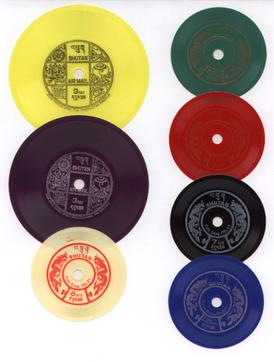
The first postage stamps of Bhutan were issued in 1962, the same year that the first motorable road was opened. Before that there was a mail delivery system in place for official mail using mail runners, and between 1955 and 1962 revenue stamps were accepted as payment for internal mail. With the opening up of Bhutan in the early 1960s, a formal postal system was introduced. The American entrepreneur Burt Todd assisted in establishing a postage stamp program in the country and Bhutan became known for the unusual designs and materials of its stamps which were chosen by Todd specifically to attract attention. With the assistance of the Indian postal advisor Dr. K. Ramamurti, who was in Bhutan from 1964 to 1968, a proper postal organization and infrastructure was set up under the leadership of a young Bhutanese officer Mr. Lam Penjor, who became the Director of the Department of Posts and Telegraphs.
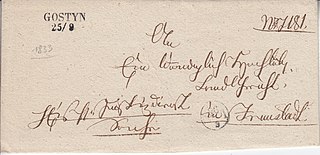
Poczta Polska, the Polish postal service, was founded in 1558 and postal markings were first introduced in 1764. The three partitions of Poland in 1772, 1793 and 1795 saw the independent nation of Poland disappear. The postal services in the areas occupied by Germany and Austria were absorbed into those countries' postal services. In 1772 the area occupied by Austria was created into the Kingdom of Galicia, a part of the Austrian Empire. This lasted till 1918. The Duchy of Warsaw was created briefly, between 1807 and 1813, by Napoleon I of France, from Polish lands ceded by the Kingdom of Prussia under the terms of the Treaties of Tilsit. In 1815, following Napoleons' defeat in 1813, the Congress of Vienna, created Congress Poland out of the Duchy of Warsaw and also established the Free City of Kraków. Congress Poland was placed under the control of Russia and the postal service was given autonomy in 1815. In 1851 the postal service was put under the control of the Russian post office department regional office in St Petersburg. In 1855 control was restored for a while to the Congress Kingdom but following the uprising in 1863 again came under Russian control from 1866 and continued until World War I. In November 1918 the Second Polish Republic was created.

Afghan Post is the national mail and courier organization of Afghanistan with its headquarters in Kabul. It has offices in all 34 provinces and 420 or so districts of Afghanistan.

The postal service of the British Army is today provided by the British Forces Post Office but its origins may be traced back to Saxon times.
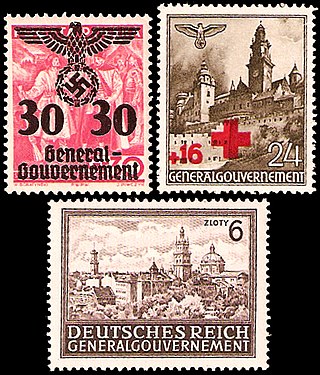
Postal communication in the General Government, previously provided by the Polish Post, were taken over by the German postal service (Reichspost) after the invasion of Poland and the establishment of the General Government in 1939, and then in 1941 in additional areas of eastern Poland.